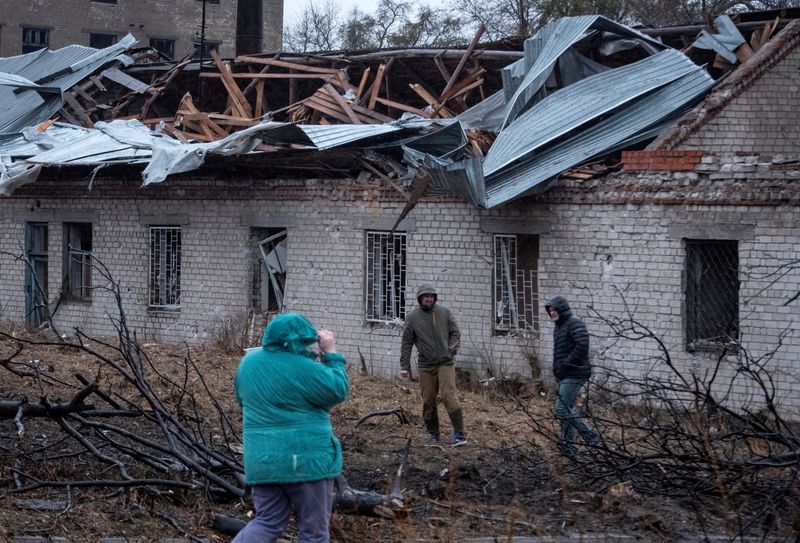Explainer-How the US tracks ballistic missile launches
By Gerry Doyle
SINGAPORE (Reuters) - The United States has layers of sensors that can spot, track and identify ballistic missile launches such as the Russian IRBM fired at Ukraine on Thursday - a Cold War system that has been refined over decades into an unblinking global network.
Six Lockheed Martin (NYSE:LMT ) and Northrop Grumman (NYSE:NOC ) satellites, known as SBIRS, for space-based infrared system, sit in geostationary orbit around earth hunting for launch signatures, according to the U.S. Space Force, which operates them.
They - and a network of smaller satellites in lower orbits - use a variety of sensors to detect the firing of a ballistic missile anywhere on the planet within seconds, from small, unsophisticated weapons such as Scuds all the way up to intercontinental ballistic missiles (ICBMs), said William Alberque, a visiting fellow at the Henry L. Stimson Center.
"The things that you can do with video, plus IR, plus synthetic aperture radars, plus ground-based radars...all of these things knit together," Alberque said. "Processing all this data at very high speed means we have the ability to know more about what is launched than ever before."
Rocket motors, for instance, produce different exhaust gases of varying temperatures based on their fuel and other design factors. These "signatures" can quickly identify a missile.
Ground-based sensors include massive solid-state early warning radars in the United States, Canada and Britain. Together with satellites, the system can determine missile type, launch angle, azimuth, apogee, velocity, size and landing point, among other things.
Besides Space Force, many other U.S. government organisations are involved, including the National Geospatial-Intelligence Agency, U.S. Strategic Command and the Missile Defense Agency. Regional military commands may be involved as well.
Some launch notifications can be automated, such as smaller, short-range weapons that don't pose any threat to the U.S. or its allies. More serious alerts for longer-range weapons or a direct threat require human analysis and decision-making.
In the case of Russia's strike on Ukraine near the city of Dnipro, there was no concern about a nuclear attack because there were no signs of warheads being moved, other forces being prepared, or the involvement of Russia's 12th Chief Directorate of the Ministry of Defense, which controls its nuclear weapons, Alberque said.
"There would be a huge signature for potential use," he said, referring to nuclear weapons.
Early warning systems as a concept originated during the 1950s, at first to spot bomber formations and later expanded to detect missiles. The first systems used enormous ground-based radars to scan for missiles rising over the horizon, and were linked to defensive systems that often included nuclear-tipped interceptors.
Space Force is in the midst of a nearly $15 billion program for more advanced early warning satellites, dubbed Next (LON:NXT ) Generation Overhead Persistent Infrared. The system will include geostationary satellites, the first of which is set for delivery in 2025, and polar-orbiting satellites scheduled for launch in 2028.
Source: Investing.com
